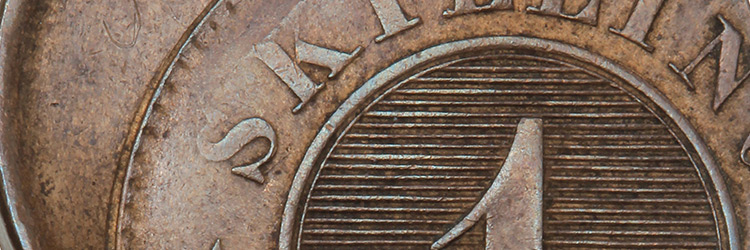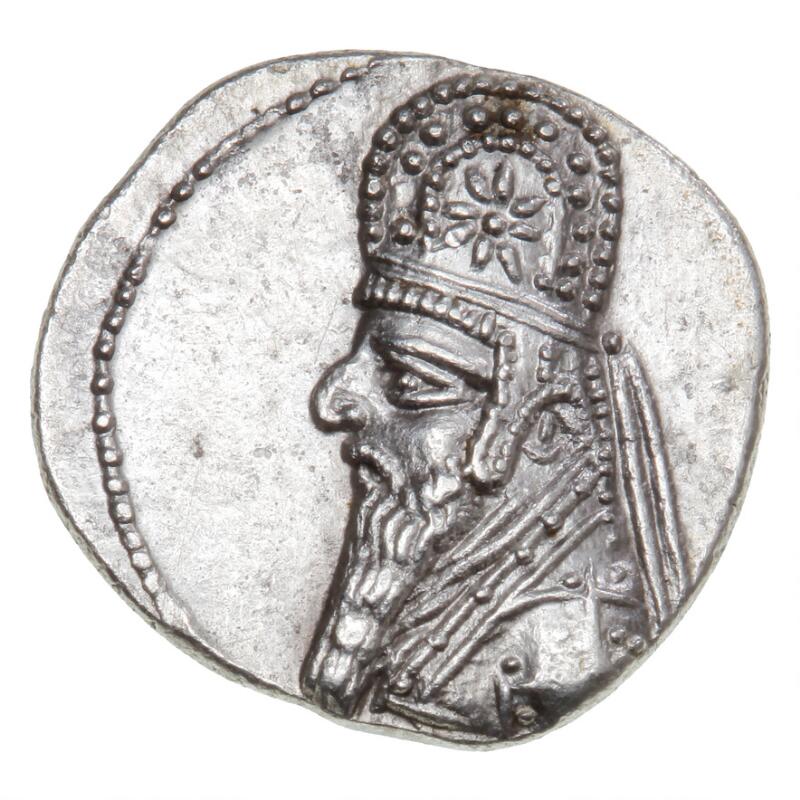Bronze Error Coin
At our current Online Auction, we can present an exciting error coin – a 1 skilling in bronze from the period 1856-1872, probably from the second half of the 1850s in Altona. It was an important period in Danish coin history, which featured the great national monetary reform of 1854, the extensive rebuilding of the mint in Altona and the introduction of bronze coins, which we dive into in this newsletter.
The Introduction of Bronze Coins
Several countries stopped minting the smallest coins in copper during the second half of the 19th century. Instead, they began using the new coin metal bronze, which consisted of alloys of copper, tin and zinc. In 1855, 1856 and the 1860s, respectively, Sweden, Denmark and Norway decided to use bronze instead of ‘pure’ copper. The bronze was stronger and harder than copper, so the coins could be more sharply struck and became difficult to counterfeit. In addition, bronze was generally cheaper than pure copper.
Help from Bernhard Levy
The chemist Bernhard Levy (1817-1863) had a great influence on this change in metal. He was born in Copenhagen and studied chemistry at the Polytechnic Institute in Copenhagen. From here his impressive career took off as he in 1839 became Doctor of Philosophy in Berlin, in 1847 received the title of Professor and later travelled to Bogotá in Columbia, where he held the title of Director of the Mint. In 1853, after several years of work in Paris, Bernhard Levy was employed at The Monnaie de Paris to lead the large-scale French bronze coinages. In 1856 he sent a report on bronze coinage to the Danish Ministry of Finance. This was perhaps done at the request of the Danish medalist Krohn at the mint in Copenhagen, who had worked on a Danish transition to bronze coins. After a period of negotiations, the Ministry of Finance decided in the summer of 1856 that the smallest coins, ½ and 1 skilling, henceforth should be made of bronze.
|
|
|
|

|
|
|
The Mint in Altona
Since the mint in Copenhagen was fully occupied with the production of the 16 skilling, it was the newly refurbished mint in Altona, which was assigned to make the Danish Kingdom's first bronze coins. The challenge was initially the actual melting and casting of the base metal, which the Danish mints had usually not worked with. The task was therefore handed over to the foundry and machinery manufacturer H. Gamst & H.C. Lunds Efterfølgere in Copenhagen. Some of the first produced strips burst into pieces like glass when the mint tried to punch out planchets, but after several attempts with different alloys etc. they succeeded in producing usable strips, planchets and coins of the new coin metal. From December 1856, the large coin factory in Altona was working at full steam, and tons of new quality bronze coins were minted for use throughout the Danish Kingdom.
You can read more about the role of bronze in Danish coin history during the 1850s in our coin specialist Michael Märcher's book (in Danish) “De kongelige møntsteder i Altona og København 1813-1873. Teknik og produktion” from 2012.

Live Coin Auction in Copenhagen
We would also like to take this opportunity to announce the upcoming Live Coin Auction in Copenhagen. It will be a large auction spread across two days, and the three catalogues are already being produced. Make sure to mark the days in your calendar!
- The auction will be accessible at bruun-rasmussen.dk in mid-October
- The catalogues will be published in mid-October
- Previews will be held in Oslo on 24 October, Aarhus on 27 October and Copenhagen on 28-30 October
- Auction: 2-3 November
For further information, please contact:
Anders Gudmundsson: +45 8818 1205 · ag@bruun-rasmussen.dk
Michael Fornitz: +45 8818 1201 · mfo@bruun-rasmussen.dk
Michael Märcher (Aarhus): +45 8818 1202 · mm@bruun-rasmussen.dk
Brian Lohmann: +45 8818 1213 · blo@bruun-rasmussen.dk
Henrik Möller: +45 8818 1203 · hem@bruun-rasmussen.dk



